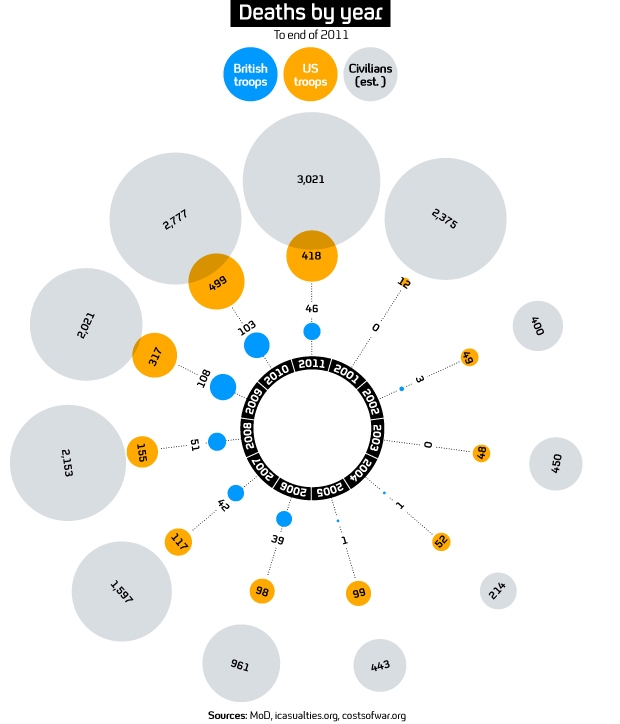Why are British troops fighting in Afghanistan?
With the announcement that six British soldiers are missing, believed killed, in Afghanistan, we examine the explanations and justifications for the country’s continued presence in the country.

The British and American presence in Afghanistan was triggered by the attacks on the US mainland on 11 September 2001.
The UK, led at the time by Prime Minister Tony Blair, lost 67 people on 9/11, more than any other country apart from the US. In the aftermath of the attack, Tony Blair was vociferous in his support for the United States, gaining considerable popularity there as a result.
It was probable, then, that the UK would participate alongside the United States in any military retaliation against the perpetrators of the attacks on the World Trade Center and the Pentagon.
In terms of its domestic politics, the United States needed to be seen to respond aggressively to the al-Qaeda-led incursions onto its territory. This was not the case in the United Kingdom.
Little domestic opposition
When a Nato force went into Afghanistan in October 2001, the UK contingent was larger than any other, barring the US. At the time there was little domestic opposition in either the United Kingdom or the United States.
The total number in Afghanistan in November 2001, including US and allied troops, was small by today’s levels – a paltry 1,300.
In 2001 Tony Blair explained that the invasion was necessary to eliminate the “terrorist threat” and the heroin supply (Afghanistan supplies 90 per cent of the world’s heroin). “Our aim is to shut down the terrorist network,” he said. Al-Qaeda‘s leader, Osama bin Laden, was thought to have his base somewhere in Afghanistan.
By 2004, with both the US and the UK deeply involved in the war in Iraq, Tony Blair refined the argument for a UK presence in Afghanistan, suggesting a terrorist link between Afghanistan and Iraq. Meanwhile, coalition military casualties in Afghanistan between 2001 and 2005 remained at a consistent, low level.
Institutional framework
The then British defence secretary, John Reid, appeared in 2006 to evolve the argument for a coalition troop presence in Afghanistan by saying that it was there “to create… a framework of society for Afghanistan institutions”.
Reid was articulating a view that Afghanistan, which had known conflict on its territory for several decades, could only find peace if a majority of the population bought into what had been, until recently, a failed state.
And in geopolitical terms, a more stable Afghanistan might be less inviting to the many militant Muslims based in and around towns in northern Pakistan.
‘Terrorist threat’
By 2009 Britain’s justification for having what was by now a sizeable force in the country – over 9,000 – appeared to have come full circle, with Defence Secretary Bob Ainsworth explaining that we were there “as a result of our assessment of the terrorist threat facing Britain”.
In February 2011, the Conservative prime minister, David Cameron, reiterated the view that the UK was in Afghanistan to stop the flow of terrorists, including British citizens, from training camps inside the country.
He rejected the idea that Britain was there as “some neo-colonial attempt to change that country”. Instead, he wanted a country “that is able to take control of its own security and its own safety… An Afghanistan to be run by the Afghans, for the Afghans.”
The Ministry of Defence website says it is expected that foreign troops will no longer be needed on the frontline by 2015, when “Afghanistan can stand up to terrorism itself and offer its people hope for the future”.
